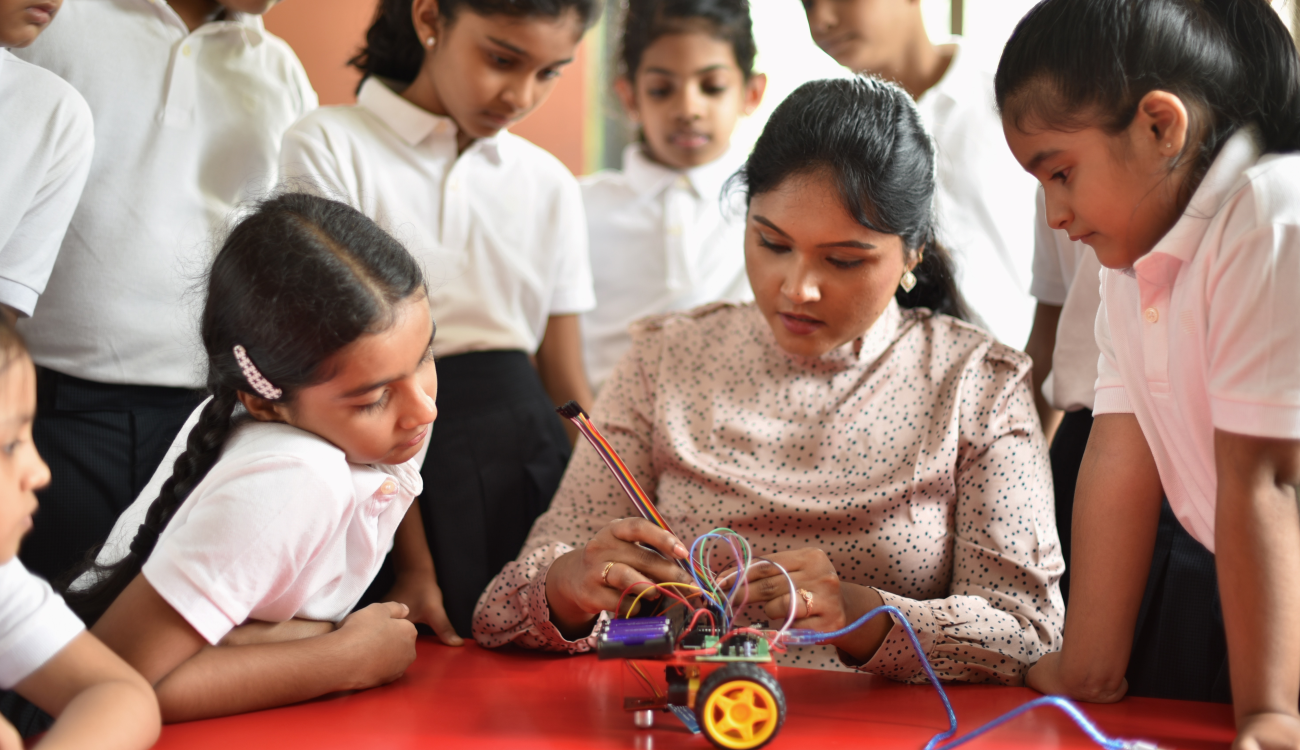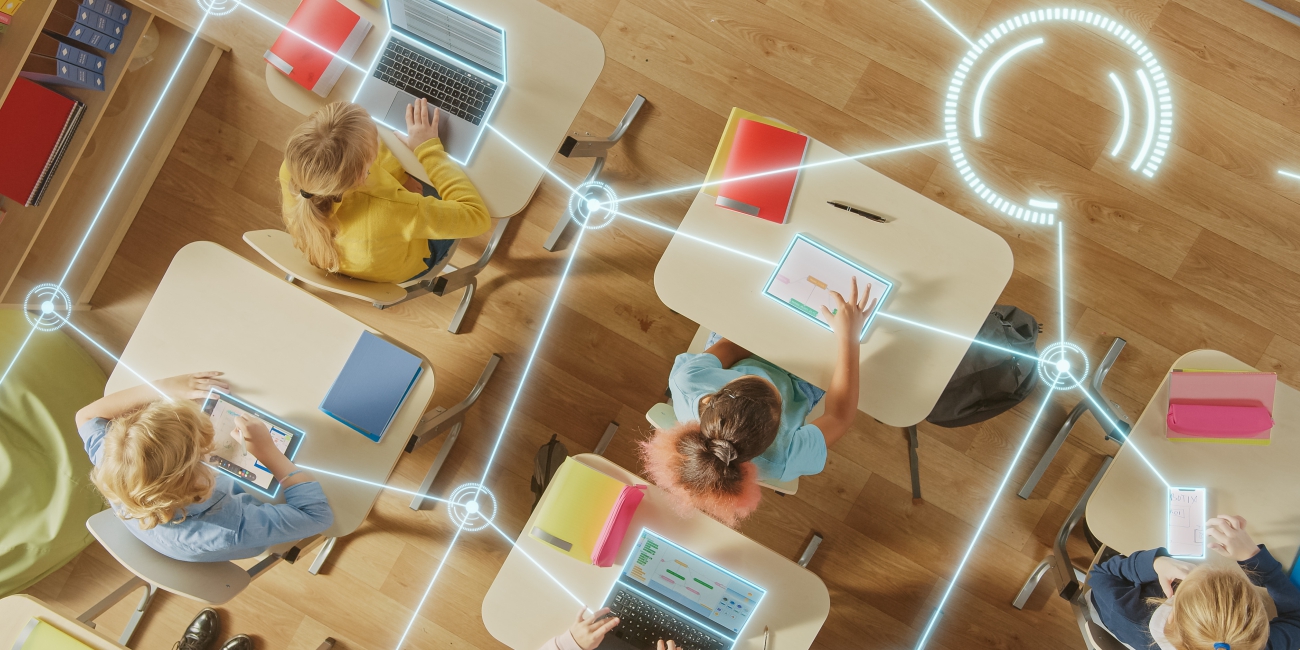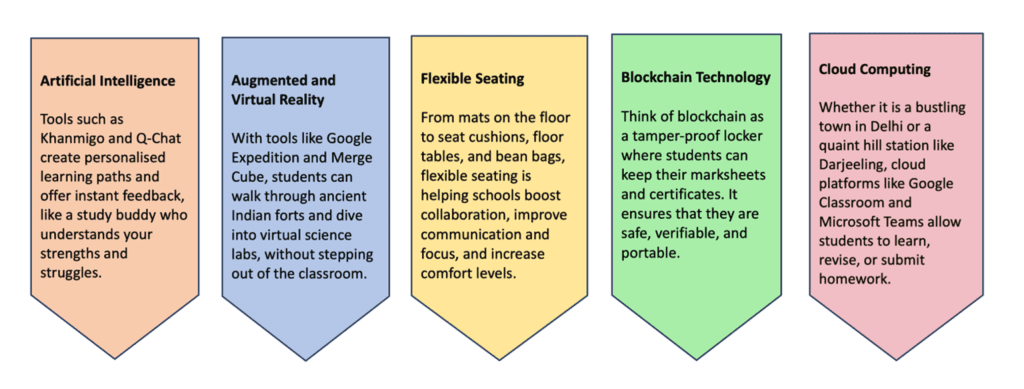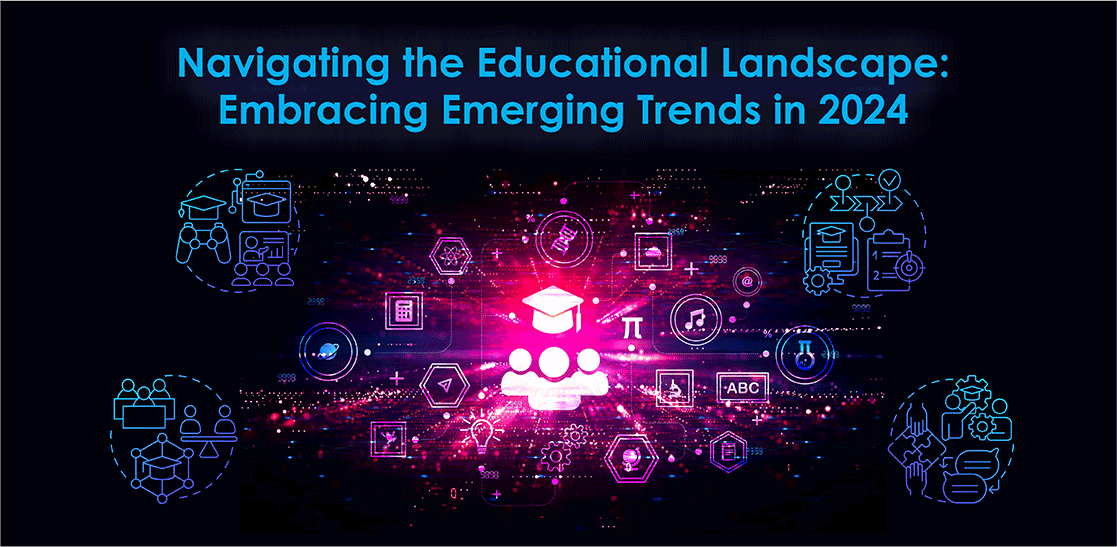![]()
STEM education teaches students to treat challenges as building blocks – opportunities to rethink and rebuild strongly.
| In this article, you’ll find: ✅ STEM in the 21st century: More than a buzzword ✅ The hidden benefits of STEM education ✅ Why parents must pay attention ✅ India’s urgent STEM demand curve ✅ AI in classrooms: A partner in progress ✅ EdTech trends: Driving classroom change ✅ STEM without borders, curiosity at scale ✅ From STEM to strength: Growth that endures ✅ STEM learning: A shared path |
Why does it work like that? How can I fix it?
Every time a child dares to ask this, the future shifts. If parents and teachers pause, listen, and equip children with the right tools, that spark can convert into a lifelong habit of questioning, reasoning, and building with confidence.
…………………………………………….…………………………………………….…………
When Saumya was eight years old, she dismantled her father’s old radio just to understand how it worked. Her parents were initially upset, but her father later told her, “Let your curiosity lead you.”
That encouragement opened a new path. Years later, Saumya used her coding skills to design a flood-alert system for her village. She didn’t begin with answers; she started with questions.
That spark never left her. It still guides her choices, quietly and steadily.
…………………………………………….…………………………………………….…………
This is what the importance of STEM education in the 21st century truly represents: nurturing resilient, agile thinkers who learn to approach uncertainty with courage and creativity.
STEM in the 21st century: More than a buzzword
In a world driven by automation, AI, and precision tools, innovation in education is no longer optional; it is essential. A well-built STEM curriculum in schools equips students to decode real-world problems, adapt under pressure, and see patterns others might miss.
India’s efforts through Atal Tinkering Labs are reshaping access. With 10,000+ labs now active across India and 1.1 crore students – 60% in government schools – STEM is becoming more inclusive. Almost all these labs are co-ed or focused on girls’ education, strengthening equity across social and gender lines.
But what does this mean for a child’s growth?
The hidden benefits of STEM education
When we picture STEM, we often picture coding classes, white lab coats, or robotics. The actual benefits are quieter and run deeper.

These outcomes rarely appear on report cards, yet they shape futures profoundly.
Why parents must pay attention
Parents sometimes ask if coding or robotics education matters for children learning towards arts, literature, or sports. The answer is yes. STEM programmes in schools are about cultivating flexible thinkers and problem solvers, regardless of their career path.
- Artists today experiment with mathematical patterns and digital design tools.
- Writers utilise data analysis and publishing platforms.
- Athletes depend on biomechanics, data analytics, and technology to improve performance.
The goal is to inculcate digital skills in students that strengthen whichever path they choose in the future.
India’s urgent STEM demand curve Our nation stands at a crucial point, and digital fluency and adaptability are now essential, making STEM education the backbone of future readiness.

This shows how tightly STEM and economic growth are linked. The nation’s ability to stay ahead in global competitiveness depends on how well students are prepared for tomorrow’s challenges, today.
AI in classrooms: A partner in progress
Utilised with intent, AI in the classroom adds a new dimension. Adaptive platforms break down complex ideas, guide students, and adjust learning paths in real-time. For students struggling with pace or concepts, AI creates personalised entry points.
Yet, no system can replace the warmth of a teacher celebrating a student’s small victory or calming pre-exam nerves. Technology can guide thinking, but teachers shape the heart of learning.
EdTech trends: Driving classroom change
The Indian EdTech landscape, comprising over 17,000 companies, was estimated at USD $7.5 billion in 2024 and is forecasted to grow at a 25.8% CAGR in the coming years.
But the real impact comes from innovators who make STEM learning affordable and hands-on. Platforms such as STEMpedia, Avishkaar, and ThinkTac are equipping schools with hands-on innovation kits, converting abstract concepts into tangible problem-solving experiences. With hybrid models becoming the norm, classrooms are being reimagined, shifting the focus from screens to flexibility, access, and collaboration.
STEM without borders, curiosity at scale
Globally, every approach differs, but the aim remains consistent: preparing students for a rapidly changing future by combining innovation with context.
- An American nonprofit organisation, Project Lead The Way (PLTW), brings hands-on STEM programmes to schools, with projects like medical devices or sustainable city designs that link classroom learning to real-world problem-solving.
- According to the 2025 India Brand Equity Foundation report, India hosts about 5.8 million STEM professionals, accounting for 28% of the global pool and 23% of global software engineers, highlighting its pivotal role in the knowledge economy.
From STEM to strength: Growth that endures
The importance of STEM education in the 21st century is often measured in GDP growth or patent counts. But its deeper value lies in resilience.
India’s momentum in semiconductors, renewable energy, health-tech, and space exploration tells a compelling story of STEM-driven progress. ISRO’s Chandrayaan-3 made history by placing India among the select nations to land on the Moon, while Aditya-L1 now studies the Sun from space. In green energy, India leads one of the world’s largest solar initiatives through the International Solar Alliance. In health-tech, pandemic-era innovations such as portable ventilators set new global benchmarks for affordability and impact. And in digital connectivity, the Unified Payments Interface (UPI) has redefined transactions worldwide, placing India at the forefront of digital finance.
These milestones show that the strength of STEM lies in numbers and towards nurturing thinkers who can question, adapt, and create under pressure.
STEM learning: A shared path
| What teachers can do | What parents can do |
| Begin with inquiry: Start your lessons with, “What do you think will happen?” | Ask thoughtful questions: When picking schools, check for coding or robotics labs, and whether teachers are trained in STEM and AI tools. |
| Link to real-world issues: Frame lessons around local challenges that include water, waste, or health to make STEM meaningful. | Create hands-on moments: Support them in mini projects such as puzzles or simple circuits, so that learning continues beyond books. |
| Model reflection: Speak your mind, adapt as you go, and let your students see your reasoning process. | Value curiosity over perfection: Encourage questions, celebrate wins and even failures, especially for girls stepping into STEM. |
| Encourage teamwork: Group projects in STEM programmes in schools help train students to debate, test, and change their ideas. | Guide digital use: Discuss the ethics of AI, set healthy limits on screen time, and encourage children to engage purposefully with digital content. |
Curiosity is the beginning of everything that matters. By turning classrooms into spaces for problem-solving in education, we prepare students to question, experiment, and adapt to an unpredictable world. STEM programmes in schools are all about nurturing sharp, agile minds that can solve, adapt, and grow across any field. As parents, educators, and mentors, the greatest gift we can give children is the confidence to ask “why” and the courage to chase the answers.




